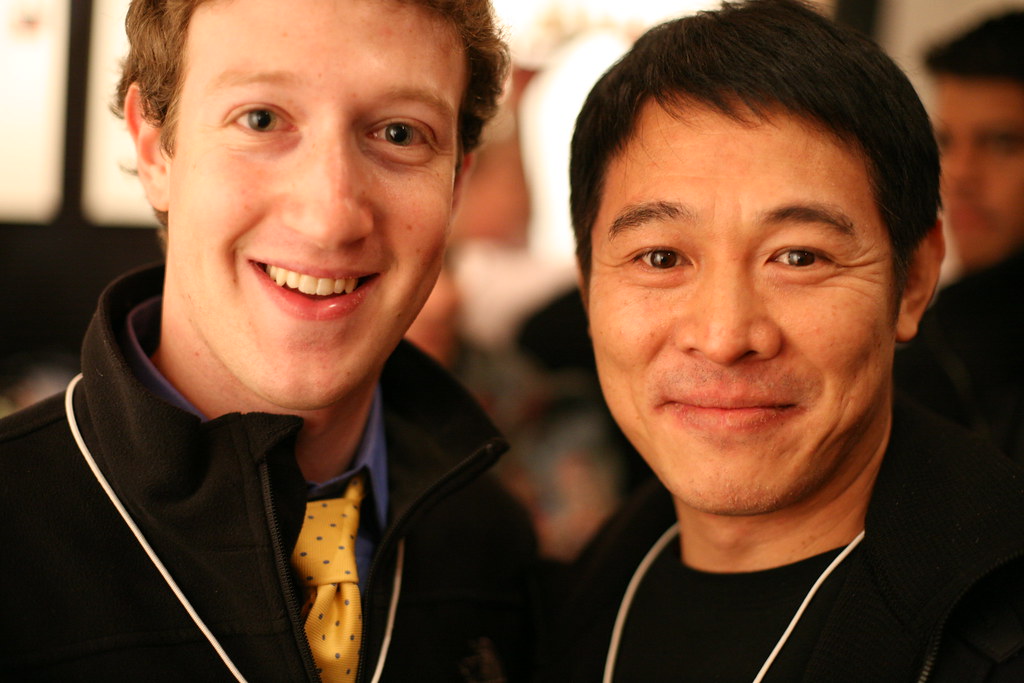
Mark Zuckerberg’s ambitious bet on the metaverse, envisioned as the next frontier of human interaction and computing, has proven to be a financially grueling endeavor, with Meta pouring tens of billions into a vision that has yet to capture widespread public adoption. Despite grand pronouncements of a digital utopia where individuals can connect, work, and create in immersive virtual environments, the reality has been far less glamorous. The company, which even rebranded from Facebook to Meta to signify its commitment, has seen its Reality Labs division accumulate losses totaling nearly $70 billion over the past six years, with a staggering $17.7 billion reported in 2024 alone.
This colossal investment, which has at times eclipsed the total revenue of Fortune 100 companies, underscores a persistent chasm between industry enthusiasm and consumer indifference. While tech giants like Apple, Microsoft, Google, and Sony have also invested heavily, no one has yet managed to crack the code for mass appeal. The dream of ubiquitous head-worn computing remains just that—a dream—with devices largely relegated to novelty status rather than becoming indispensable tools in our daily lives.
The ongoing struggle isn is not for lack of trying or innovation; Meta itself has showcased impressive prototype hardware like the Orion glasses, and experts continue to insist that the “headset of the future” is just around the corner. However, a confluence of deep-seated problems, ranging from fundamental market dynamics to emergent technological shifts, continues to impede the metaverse’s trajectory. As Zuckerberg steadfastly commits to more losses in the future, it becomes critical to dissect the core challenges that have turned a multi-billion-dollar vision into one of tech’s most talked-about struggles. Here are the first seven of fourteen unsolved problems currently plaguing Meta’s metaverse ambitions.

1. **Low Consumer Adoption and Stagnant Demand:**One of the most immediate and glaring issues confronting the metaverse is the stubbornly low rate of consumer adoption. Despite consistent bullish predictions from analysts and significant marketing pushes from industry leaders, the sales of virtual reality (VR) and augmented reality (AR) devices have remained remarkably flat. This disconnect between industry excitement and actual market penetration highlights a fundamental lack of resonance with the average consumer, who, by and large, remains unimpressed by what’s currently on offer.
International Data Corp. (IDC), an industry research firm, has historically issued optimistic projections for headset sales, yet actual sales figures tell a starkly different story. These devices, irrespective of their price point or sophistication—from high-end offerings like the Apple Vision Pro to more affordable novelties—have consistently remained “mired in the 10 million units a year or less range.” This stagnation suggests that the market has not yet found a compelling reason for mass audiences to integrate these technologies into their daily routines.
Jitesh Ubrani, an IDC researcher, openly acknowledged this gap, noting his shop has grown “less optimistic over time about the market.” This shift in perspective, even from those who track the industry closely, underscores a growing realism about the challenges. The market for this technology has been “notably volatile,” with even major players like Microsoft and Google tempering their interest in headsets. Such market behavior illustrates a deeper issue than just pricing or availability; it points to a missing value proposition that would drive widespread consumer desire.

2. **Significant Financial Losses for Meta:**Mark Zuckerberg’s commitment to the metaverse has come at a staggering financial cost, with Meta’s Reality Labs division becoming a persistent drain on the company’s resources. Filings indicate that Zuckerberg has personally overseen more than $60 billion in losses on this technology over the past five years. This figure is not merely a statistical anomaly but a colossal investment that has yet to yield a return, raising serious questions about the long-term viability of the current strategy.
The financial hemorrhaging continued into recent periods, with Reality Labs reporting a $17.7 billion loss in 2024 alone. Cumulatively, since the end of 2020, the division’s losses have topped $45 billion, escalating to nearly $70 billion over the past six years. These numbers are not just substantial; they are comparable to the entire annual revenue of major corporations, highlighting the sheer scale of Meta’s expenditure in pursuit of this future computing platform.
Despite these eye-watering figures, Meta’s leadership, including Zuckerberg and CFO Susan Li, has consistently signaled that investors should anticipate “more losses in the future.” Zuckerberg views this as a multi-year investment cycle, likening it to the foundational R&D required to create the “next iPhone.” While Meta’s overall business remains profitable due to its “family of apps” (Facebook, Instagram, WhatsApp), the metaverse bet represents a significant drag, with expected operating losses for Reality Labs slated to be even higher than in previous years, driven by the direct costs of headcount, operating expenses, and raw materials for VR headsets.
Read more about: Inside the 2023 Layoff Wave: A Full List of Major US Companies Making Significant Workforce Reductions

3. **The Rise of Generative AI as a Competitor:**The strategic landscape for the metaverse was dramatically altered by the unexpected and rapid ascent of generative artificial intelligence (AI). Chatbots like OpenAI’s ChatGPT and Google’s Gemini quickly captured the industry’s attention, diverting both public interest and significant investment away from virtual worlds. This shift fundamentally challenged the metaverse’s position as the “next generation of disruptive technology,” as AI offered more immediate and tangible business impacts.
According to experts like Irina Karagyaur, co-founder and CEO of BQ9 Ecosystem Growth Agency, generative AI provides “immediate and scalable business impact” without the extensive infrastructure investment typically required by the metaverse. Tools such as ChatGPT, MidJourney, and DALL·E demonstrated “immediate availability” and offered enterprise users and consumers rapid process optimization and content generation capabilities. This stark contrast in return on investment (ROI) quickly made AI a more attractive proposition for businesses seeking quick gains.
The strategic reallocation of venture capital further illustrates this trend. Capital that once poured into metaverse-related projects began to flow aggressively into AI startups, leading to a downgrading of metaverse investments. Herman Narula, CEO of metaverse venture capital incubator Improbable, noted that AI technology “seized the industry’s attention” as the new frontier, causing a “large-scale shift in the attention of the metaverse.” This rapid reorientation of focus has undoubtedly left the metaverse struggling to regain its footing in the tech spotlight.

4. **High Infrastructure and Hardware Costs:**A significant barrier to mass adoption of the metaverse lies in the prohibitive costs associated with its enabling hardware and the underlying infrastructure demands. Virtual and augmented reality headsets, central to experiencing these immersive environments, remain out of reach for a substantial portion of the consumer market. These devices, positioned as gateways to the metaverse, carry price tags that deter casual users and limit their appeal to niche groups.
Examples abound: the Apple Vision Pro, a high-end AR/VR device, commands a price of $3,500, while Meta’s own Quest 3 headsets start at $500. These figures stand in stark contrast to the accessibility of AI tools, many of which offer free limited services or affordable monthly subscriptions without requiring any additional hardware investment. This cost differential creates a significant hurdle, as consumers are less willing to make a substantial upfront hardware purchase for an experience whose long-term value remains unproven.
Charu Sethi, a Web3 expert and chief ambassador of Polkadot, explicitly stated that the “high prices of high-end virtual reality (VR) and augmented reality (AR) headsets and ‘complicated login processes’ further hinder the popularity of the Metaverse.” This highlights not just the financial barrier but also the user-experience friction associated with current hardware. The high investment and high risk associated with the metaverse become increasingly difficult to justify when a “sustainable profit model” and mass market penetration remain elusive.
Read more about: The Electric Pickup Truck Showdown: A Comprehensive Review of Ford F-150 Lightning and Tesla Cybertruck

5. **Immature Business Models and Lack of Sustainable Value:**Beyond the hardware, the metaverse has struggled with fundamentally immature business models that failed to deliver sustainable value to users, particularly in its early, hyped phases. When the concept first gained widespread popularity, many major brands rushed into the space, launching non-fungible tokens (NFTs) and expensive virtual land projects. However, as noted by Charu Sethi, “almost no users gained sustainable value” from these ventures. This created a perception that the metaverse was more about speculative gains than genuine utility.
Platforms like Decentraland and The Sandbox, despite attracting millions in investment, frequently “hovered below 5,000 daily active users.” Such low engagement figures for platforms built on multi-million-dollar investments underscore a critical flaw in their initial business propositions. The promise of virtual economies and digital ownership often overshadowed the actual provision of engaging content or services that would keep users coming back.
Irina Karagyaur further highlighted this problem, stating that the “high investment and high risk in the metaverse are becoming increasingly difficult to justify due to the failure to explore a sustainable profit model.” For many businesses, the rapid, quantifiable gains offered by AI solutions overshadowed the speculative, long-term promise of the metaverse. This absence of clear, demonstrable, and sustainable value for both creators and consumers has been a core impediment to its widespread acceptance and growth.

6. **Speculative Cryptocurrency Hype and Unfulfilled Promises:**The early narrative of the metaverse became deeply entangled with the volatile world of speculative cryptocurrency and non-fungible token (NFT) markets, a connection that ultimately proved detrimental. Herman Narula, CEO of Improbable, noted that “The term ‘metaverse’ has drawn criticism for being associated with speculative cryptocurrency hype, with companies raising large amounts of money, selling large amounts of assets, and making a series of promises that ultimately failed to deliver.” This created an environment of inflated expectations that quickly led to disillusionment.
Following Meta’s strategic shift towards the metaverse, the prices of associated tokens like Decentraland (MANA), The Sandbox (SAND), and Axie Infinity (AXS) saw dramatic surges. However, as doubts about the metaverse’s future began to ferment, these tokens plummeted. DappRadar data shows that in 2024, transaction volume and sales volume for metaverse NFT projects fell to their lowest levels since 2020, with transaction volume down 80% year-on-year and sales volume down 71%.
This dramatic downturn, with MANA, SAND, and AXS tokens losing more than 95% from their all-time highs in November 2021, reflects the collapse of a speculative bubble. While some analysts like Glassnode note an increase in “convincing holders… steadily increasing their positions” around lower price points, viewing these as “undervalued investment opportunities,” the initial boom-and-bust cycle severely damaged public trust and shifted focus away from the underlying technology to financial speculation.

7. **Closed and Restricted Virtual Environments:**Early iterations and “prototype metaverses” presented a significant hurdle to user engagement by offering environments that were far too “closed and restricted.” The grand vision of an interconnected, expansive digital world was often contradicted by the reality of siloed platforms that severely “limited user activities.” This lack of openness and interoperability prevented the organic growth and diverse interactions that are hallmarks of a truly engaging digital space.
Instead of fostering boundless creativity and spontaneous social dynamics, these initial metaverse offerings often felt like glorified video games or isolated applications, unable to fulfill the promise of a truly immersive, collaborative platform. Users found themselves confined to predefined activities within specific virtual spaces, which starkly contrasted with the flexibility and freedom offered by traditional internet platforms or even popular online gaming worlds like Roblox and Fortnite.
This restrictive nature contributed to the overall failure of these early metaverses “to live up to expectations.” The inability to seamlessly move assets, identities, or even experiences between different virtual environments stifled the sense of a unified “meta-world.” It underscored a fundamental design flaw: a vision of a grand, interconnected digital future was being implemented through fragmented, proprietary silos, which ultimately curtailed user adoption and the organic development of vibrant digital communities.

8. **The Absence of a ‘Killer App’ to Drive Mass Adoption:**One of the most profound challenges still plaguing the metaverse is the conspicuous absence of a ‘killer app’ – a single, indispensable application that would compel widespread consumer adoption and integrate these virtual worlds into daily life. DappRadar explicitly notes that “Without a ‘killer app’ to drive mass adoption, media attention has waned and companies that had previously invested heavily in virtual worlds have shifted their focus.” This highlights a critical void: while impressive technology exists, a truly compelling reason for the average user to consistently engage with the metaverse remains elusive.
Historically, every transformative computing platform, from the personal computer to the smartphone, was catalyzed by one or more ‘killer apps’ that showcased its unique value proposition. For the metaverse, such an application would need to offer unparalleled utility, entertainment, or social connection that cannot be replicated as effectively through existing technologies. Without this magnet, the promise of immersive digital experiences remains largely theoretical, failing to translate into sustained user engagement and loyalty.
This lack of a compelling use case transcends mere technical capability; it speaks to a fundamental failure in demonstrating the metaverse’s necessity or irresistible appeal. Until a ‘killer app’ emerges, one that creates genuine, undeniable value and makes metaverse interactions feel indispensable, it will continue to struggle for relevance against more mature and immediately useful digital platforms.

9. **Practical Limitations for Daily User Experience:**Beyond the technological hurdles and financial outlays, the practicalities of integrating current metaverse hardware into daily life present significant obstacles to mass adoption. Kim Currier, marketing director of the Decentraland Foundation, acknowledges this candidly, stating that while devices like Apple’s Vision Pro and Meta Quest 3 “have set off a wave of innovation, consumers will still face the fact that it is not realistic for the vast majority of users to wear a headset all day long.” This speaks to fundamental ergonomic and social limitations.
The bulkiness, weight, and sometimes isolating nature of current head-mounted displays are simply not conducive to prolonged, comfortable use across diverse daily activities. Users are not yet ready or willing to swap the convenience and subtlety of smartphones for devices that can be cumbersome, potentially cause motion sickness, or separate them from their immediate physical surroundings for extended periods. This friction in the user experience remains a major barrier.
Furthermore, Charu Sethi, a Web3 expert, pointed out that “complicated login processes” further hinder the popularity of the Metaverse. These additional layers of friction, often involving multiple steps, unfamiliar interfaces, or complex account management, deter casual users who expect seamless, intuitive access to digital services. Such complexities underscore that the user journey is not yet streamlined for a broad consumer base, making regular interaction a chore rather than an effortless engagement.
These practical limitations underscore why, despite the technological advancements, headsets remain “a novelty we try a few times and then forget,” rather than becoming “something many of us do all the time.” Until the hardware is as unobtrusive and user-friendly as a pair of glasses, and the access as simple as opening an app, the metaverse will struggle to shed its niche appeal and become an indispensable tool in our daily lives.
Read more about: Disappointment in Every Byte: 11 Gaming Consoles Players Say They’d Unbuy If They Had a Choice

10. **Persistent Technical Bottlenecks:**The ambition of the metaverse, with its vision of hyper-realistic, persistent, and seamlessly interactive virtual worlds, continues to clash with persistent technical bottlenecks that are proving difficult to overcome. Kim Currier from the Decentraland Foundation cited “technical bottlenecks that are difficult to break through” as a key reason for the metaverse’s current cold reception. These challenges range from rendering complex 3D environments in real-time to ensuring low latency for truly immersive interactions, all while supporting a vast number of concurrent users.
Creating truly engaging virtual spaces demands immense computational power, advanced graphics processing, and robust network infrastructure far beyond what is readily available or affordable for mass consumers. Issues like lag, glitches, and low-resolution graphics can quickly shatter immersion and undermine the entire experience, making the digital world feel less like a “digital utopia” and more like an unfinished prototype. The dream of a smooth, believable virtual reality is often hampered by the current state of computing and networking capabilities.
These bottlenecks extend to the development tools and platforms themselves. Building the metaverse requires sophisticated content creation pipelines, interoperable standards for digital assets and identities, and scalable server architectures that can handle the projected influx of users and data. Progress in these areas is often incremental, and the “headset of the future” that promises to solve many of these issues still feels perpetually “just around the corner,” reflecting the deep-seated engineering challenges yet to be resolved.
Ultimately, until these fundamental technical barriers are substantially lowered, the metaverse will remain constrained in its ability to deliver on its grand promises. The current state of technology, while impressive, has yet to mature to a point where it can effortlessly support the scale, fidelity, and seamlessness required for a truly pervasive and engaging metaverse experience, making sustained mass adoption a distant prospect.

11. **The Significant Structural Shift in Venture Capital Towards AI:**One of the most impactful structural changes affecting the metaverse’s trajectory is the dramatic and rapid reallocation of venture capital away from virtual worlds and towards generative artificial intelligence. Herman Narula, CEO of Improbable, observed that AI technology “seized the industry’s attention” as the new frontier, resulting in “a large-scale shift in the attention of the metaverse.” This fundamental redirection of funding has significantly hampered the metaverse’s development and growth prospects.
Irina Karagyaur, co-founder and CEO of BQ9 Ecosystem Growth Agency, further emphasized this, noting that “The strategic shift in venture capital is particularly significant: capital is pouring into AI startups, while Metaverse-related projects are being downgraded.” This isn’t merely a matter of one technology being more interesting; it’s a cold, hard business decision driven by the promise of faster and more tangible returns. AI solutions offer “immediate and scalable business impact” without the extensive infrastructure investment typically required by the metaverse.
The preference for AI stems from its ability to offer “immediate availability” and rapid process optimization, generating quantifiable gains for businesses in the short term. In contrast, the metaverse, with its high investment costs and uncertain, long-term return on investment, simply cannot compete for venture capital at the same pace. This has created a funding drought for many metaverse projects, starving them of the crucial capital needed for innovation, development, and market penetration.
This shift represents a significant blow to the metaverse’s ecosystem. Without robust venture capital backing, the pace of innovation slows, promising startups struggle to scale, and the overall vision for an interconnected digital future becomes harder to realize. The industry’s focus and financial muscle have decisively moved, leaving the metaverse in a precarious position as it tries to regain its footing in a rapidly evolving tech landscape.
Read more about: Toyota’s Hypothetical ‘Water Engine’: Unpacking Hydrogen’s Disruptive Potential and the Future of Mobility Beyond EVs

12. **The Niche Market Appeal of Current Hardware and Accessibility Barriers:**Despite considerable investment and technological advancements, current metaverse hardware, including high-end VR/AR devices, continues to appeal almost exclusively to a niche market, failing to break into the mainstream. Irina Karagyaur, an ITU expert, points out that devices such as Apple Vision Pro and Meta Quest 3 “can only attract niche user groups and fail to open up the mass consumer market.” This is a crucial distinction from a simple cost issue; it highlights a fundamental lack of broad appeal.
Even with prices ranging from Apple’s $3,500 Vision Pro to Meta’s $500 Quest 3, the value proposition for the average consumer has not been compelling enough to justify the investment. These devices, while impressive technologically, are not seen as essential tools for daily life by the vast majority. Instead, they remain specialized gadgets primarily for gaming enthusiasts, early adopters, or specific professional applications, rather than becoming ubiquitous.
Compounding this niche appeal are persistent accessibility barriers beyond just price. As Charu Sethi noted, “complicated login processes” further deter potential users. The friction involved in setting up, learning, and consistently using these devices often outweighs the perceived benefits for a casual audience accustomed to the intuitive simplicity of smartphones. These practical hurdles contribute significantly to the stagnation of sales, keeping devices “mired in the 10 million units a year or less range.”
Therefore, the problem isn’t just that hardware is expensive, but that it struggles to demonstrate indispensable value to a wide audience while also presenting significant usability challenges. Until metaverse hardware can offer seamless, intuitive, and broadly appealing experiences at an accessible price point, it will remain confined to its current niche, preventing the mass adoption necessary for the metaverse to thrive.

13. **Overdrawn Market Expectations and Speculative Bubbles:**The metaverse’s early trajectory was severely hampered by “market bubbles caused by overdrawn expectations,” as identified by Kim Currier. The initial hype created an environment where promises far outstripped immediate capabilities, leading to unrealistic visions of immediate digital utopias. This speculative fervor resulted in “companies raising large amounts of money, selling large amounts of assets, and making a series of promises that ultimately failed to deliver,” according to Herman Narula.
This cycle of inflated expectations and subsequent under-delivery led to a significant loss of public trust and enthusiasm. When the grand visions of virtual land ownership, digital economies, and immersive social interactions failed to materialize in a meaningful or sustainable way for the average user, public attention inevitably plummeted. This disillusionment was exacerbated by the dramatic downturns in associated speculative assets, which came to define the public perception of the metaverse.
The consequence of these overdrawn expectations has been a profound industry reshuffle, as Currier describes it. The initial “cold reception” is, in fact, “a reconstruction of the industry’s value,” where “false participants” are being screened out. This painful process of correction means the metaverse must now rebuild its credibility, moving away from speculative appeals to demonstrate tangible, sustained value, a task made significantly harder by the initial boom-and-bust cycle.
Ultimately, the metaverse suffered from being a victim of its own hype. The gap between ambitious pronouncements and the reality of early, underdeveloped platforms created a speculative bubble that burst, leaving behind a landscape of skepticism. Overcoming this perception and proving its worth will be a long and arduous journey, requiring a clear departure from the unrealistic promises that characterized its initial surge.

14. **The Crucial Need to Pivot from Escapism to Real-World Utility:**A critical strategic pivot, essential for the metaverse’s survival and future growth, is the shift from offering escapist virtual worlds to providing real-world utility. Irina Karagyaur underscores this, stating that the metaverse “will only continue to grow where it complements existing industries, not where it seeks to replace them.” This reorientation emphasizes practical applications that enhance reality rather than seeking to entirely supplant it.
This paradigm shift is already evident in emerging trends. Instead of corporate-controlled virtual worlds, the focus is increasingly on “human-centered, community-driven ecosystems,” as Karagyaur elaborates. Platforms like Roblox, Fortnite, and Everworld, with their vast daily active users (Roblox exceeding 80 million, Fortnite attracting over 10 million per event), exemplify this. These platforms empower users to “create, connect, and collaborate” within established, engaging frameworks, rather than offering abstract escapist solutions.
Furthermore, the integration of AI is seen not as competition but as an opportunity. Kim Currier suggests AI tools can “accelerate the construction of virtual worlds, help people track what’s happening in virtual spaces in real time, and make the experience of the metaverse more dynamic and personalized.” This synergy can unlock new forms of “value-driven innovation” that Herman Narula insists are crucial, providing “practical value” beyond mere dazzling visuals.
The future of the metaverse, therefore, lies in its ability to deliver tangible benefits that improve aspects of our daily lives, rather than merely providing an alternative to them. Industrial applications like Siemens’ collaboration with Nvidia on digital twins, which create virtual replicas of physical systems for optimization, offer a glimpse into this utility-driven future. As Karagyaur concludes, “The next phase of digital technology will no longer be about escaping reality, but about improving reality itself,” aligning with the basic human need for self-actualization.
Looking ahead, the metaverse is not facing an outright demise, but rather a profound metamorphosis. This period of “industry reshuffle” is a necessary cleansing, clearing the market for “loyal builders” who truly understand its boundaries and focus on “products that users really need.” The journey forward demands a concerted effort to overcome technical hurdles, rethink business models, and, most importantly, demonstrate clear, compelling, and practical value that resonates with a broad audience. While the road remains challenging, the insights from this period of intense scrutiny suggest a more grounded, utilitarian, and ultimately sustainable path for the metaverse to eventually realize its potential, not as a replacement for our world, but as a powerful enhancement to it.



